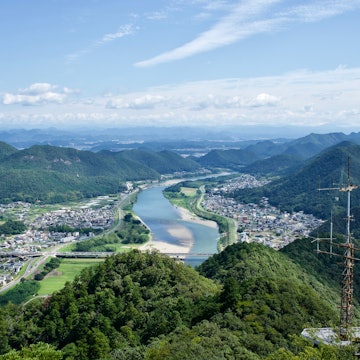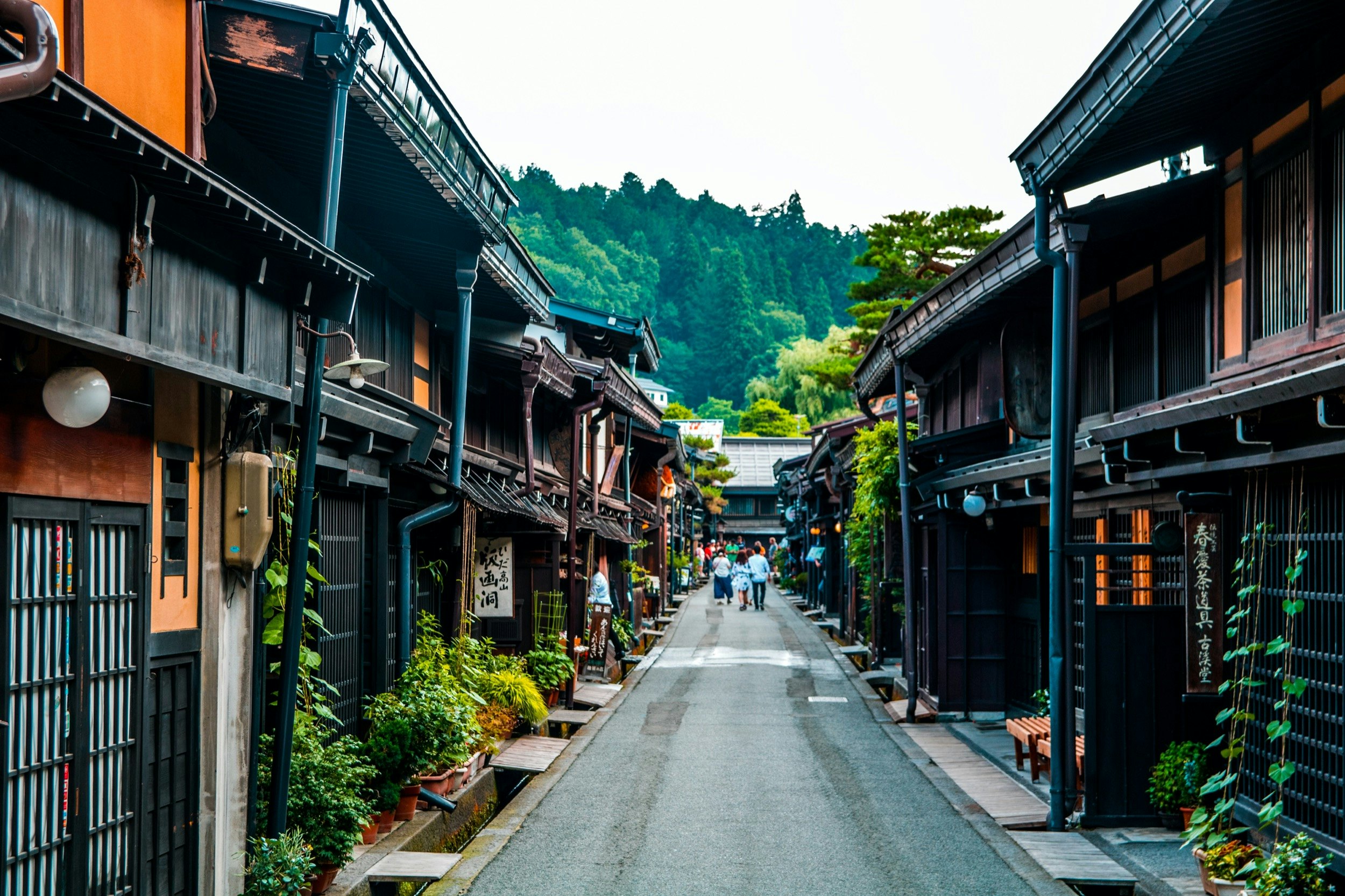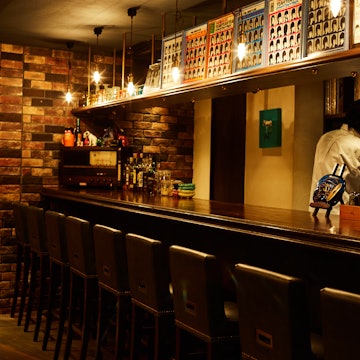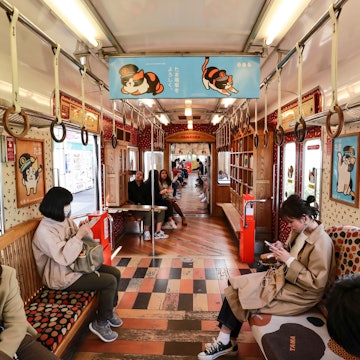
Exploring the best of central Honshu with the Three-Star Road
Sponsored by

Mar 16, 2021 • 6 min read

The Mitsuboshi Kaidou or the ‘Three-Star Road’ features some of the most important cultural properties in Japan © Theeraphong / Shutterstock
The Mitsuboshi Kaidou or the ‘Three-Star Road’ refers to the area that connects Matsumoto through to Kanazawa with a string of star-studded attractions, including the incredible Nagano area, that make this one of the most interesting routes to travel in Central Honshu.
The Three-Star Road features destinations that have attained three stars in the Michelin Green Guide Japan and some of the most important cultural properties in the country. Getting between them is simplified with the ‘Three-Star Route Option Ticket (one way),’ a discounted bus pass that allows foreign visitors to travel the Mitsuboshi Kaidou over seven days. At just ¥5,500 (about $52 USD) for adults and half price for kids, this economical one-way ticket takes the guesswork out of how to get from A to B.
Whether it’s your first time in Japan and you want to get off the most well-worn tourist route, or you’re wanting to delve deeper into traditional Japan, here’s what awaits you on the Three-Star Road.

Matsumoto
A trip to Matsumoto is well worth it just to see its impressive Matsumoto Castle. While many of Japan’s castles have been fully or partially rebuilt as a result of war, fire or modernization efforts, Matsumoto Castle is one of just twelve original castles that exist in Japan today.
A designated National Treasure, Matsumoto Castle’s wooden keep is the oldest surviving such structure in the country, dating back to around 1593-1594. The contrast between the black-coloured castle and the whiteness of the snow-capped Japan Alps behind is striking.
Today the castle is a welcoming landmark that looks stunning in all seasons and is a famous spot for cherry blossom viewing in the spring. The best way to enjoy Matsumoto Castle is to venture inside during the day and come back to the grounds at night to view it spectacularly lit up and reflected in the moat below.
Onward bus journey: 2 hours 25 minutes to Takayama, no reservation required. Stop at the beautiful Hirayu Onsen for a relaxing hot spring soak along the way.

Takayama
For those in the know, Takayama, also referred to as Hida-Takayama to differentiate it from other cities of the same name, is one of the best places in Japan to experience traditional streetscapes.
A 10-minute walk from Takayama Station will get you to the Sanmachi Suji district, a preserved area of traditional Edo-era buildings, the craftsmanship of which showcase the town’s illustrious history in woodwork. Of particular note is the street of Sannomachi with its merchant homes, restaurants, cafes and sake (rice wine) breweries.
If you can time it right, the Takayama Festival held in spring and autumn is considered one of Japan’s best festivals.
Onward bus journey: 50 minutes to Shirakawa-go, reservation required.

Shirakawa-go
Nestled in a valley among the mountains of Gifu Prefecture is the UNESCO Cultural Heritage site of Shirakawa-go, a unique village and outdoor museum of some 110 gassho-zukuri farmhouses, with as many as 70 more located in the surrounding area.
Gassho-zukuri means ‘constructed like hands in prayer’ and is so-called because the steep, thatched roofs are said to resemble the praying hands of a Buddhist monk. The highly peaked roofs help to prevent the buildup of snow and, rather interestingly, weather the area’s heavy annual snowfall without a single nail.
The bus will drop you off in Ogimachi, the main attraction and Cultural Heritage section of Shirakawa-go. Here you’ll find the highest concentration of gassho-zukuri farmhouses, some more than 250 years old with at least one said to be more than 300 years old. Several farmhouses are open to visitors, some of which have been converted into restaurants, teahouses and lodgings.
The ultimate way to experience Shirakawa-go is to spend a night in one and wander the village in the relative solitude of early morning before the tour buses arrive.
Onward bus journey: 30 minutes to Gokayama (Suganuma) or 45 minutes to Gokayama (Ainokura), no reservation required.

Gokayama
Just 20km away, you can complete your gassho-zukuri exploration by visiting Gokayama and its hamlets of Suganuma and Ainokura, that together with Shirakawa-go’s Ogimachi form the World Heritage site.
Suganuma is often bypassed for the larger Ainokura, but this quaint collection of nine farmhouses is ideal for those who want to wander and take photos without the tourist crowds. It’s a further 15 minutes by bus to Ainokura and its twenty gassho-style farmhouses.
Onward bus journey: From Ainokura-guchi bus stop, it’s one hour to Shin-Takaoka Station, no reservation required. Then 14 minutes on the Hokuriku Shinkansen bullet train or 1 hour by local train (one transfer) to Kanazawa.

Kanazawa
Kanazawa is an incredible gem by the Sea of Japan that exudes traditional Japan in a way few places can. Kanazawa was actually the second largest city in Japan after the old capital to escape air raids in WWII, leaving much of the old city intact.
Highlights include the Omicho Market – which turns 300 years old in 2021 – the beautifully-preserved traditional teahouse and geisha district of Higashi Chaya, and the samurai district of Nagamachi with its mud wall homes and long, narrow alleys.
The city’s crown jewel, however, has to be Kenrokuen Garden , one of Japan’s ‘three best gardens.’ Japan always sets the bar high for landscaping, but Kenrokuen is named after, and considered to have, the “six attributes” of a perfect garden: spaciousness, seclusion, artificiality, antiquity, abundant water and broad views. Allow several hours here to truly explore its exceptionalism.

Nagano
While not officially on the Three-Star Road, it is possible to add a convenient stop to another three star site, the impressive Zenkoji Temple in Nagano, by way of the Hokuriku Shinkansen. The main hall, reconstructed in 1707, is a designated National Treasure and the fourth largest wooden structure in Japan.
Continue the spiritual journey by taking a bus up nearby Mount Togakushi to see
Togakushi Shrine, a series of five shrines related to an important story in Japanese mythology, connected by roads and forested hiking trails lined with trees hundreds of years old.
Home to the historic Togakure school of ninjutsu or ninja arts, combine your visit with a stop at the Togakushi Folk Museum (next to the entrance to the upper shrine) with its fun, maze-like Ninja House of tricks and shuriken ninja star throwing range, and The Kids Ninja Village (near the middle shrine), full of exciting obstacle courses for ninjas in training.
Those visiting Nagano in winter can easily add in some time on the slopes at leading ski resort areas, including Hakuba, Shiga Kogen and Nozawa Onsen.
Either start here before taking the limited express or local train to Matsumoto or end here after Kanazawa (or vice versa). Any train journeys are in addition to the Three-Star Route Option Ticket (one way).

How to book
The Three-Star Route Option Ticket (one way) is available to non-Japanese passport holders visiting Japan on a short-term stay (90 days or less) or medium- to long-term stay residents with a residence card. Tickets can be purchased at various JR East Travel Service Centers in Tokyo (including Haneda and Narita Airports), and in Nagano and Matsumoto.
Prior to boarding, take your Three-Star ticket to the bus company’s ticket counter and exchange it for a valid boarding pass. Note that some buses require a reservation that can be made either at the respective ticket office or by calling the Nohi Bus Reservation Center.
Hokuriku Shinkansen (JR-East and JR-West) travels from Tokyo to Nagano in about 1hr 45min (around ¥8,500, or $80 USD one-way).
This article was written in partnership with Option Ticket Mitsuboshi Kaidou, Kanazawa City and Nagano City
Sponsored by Mitsuboshi-Kaidou
As a travel entertainment and inspirational media outlet, we sometimes incorporate brand sponsors into our efforts. This activity is clearly labeled across our platforms.
This story was crafted collaboratively between Mitsuboshi-Kaidou and Lonely Planet. Both parties provided research and curated content to produce this story. We disclose when information isn’t ours.
With sponsored content, both Lonely Planet and our brand partners have specific responsibilities:
-
Brand partner
Determines the concept, provides briefing, research material, and may provide feedback.
-
Lonely Planet
We provide expertise, firsthand insights, and verify with third-party sources when needed.















